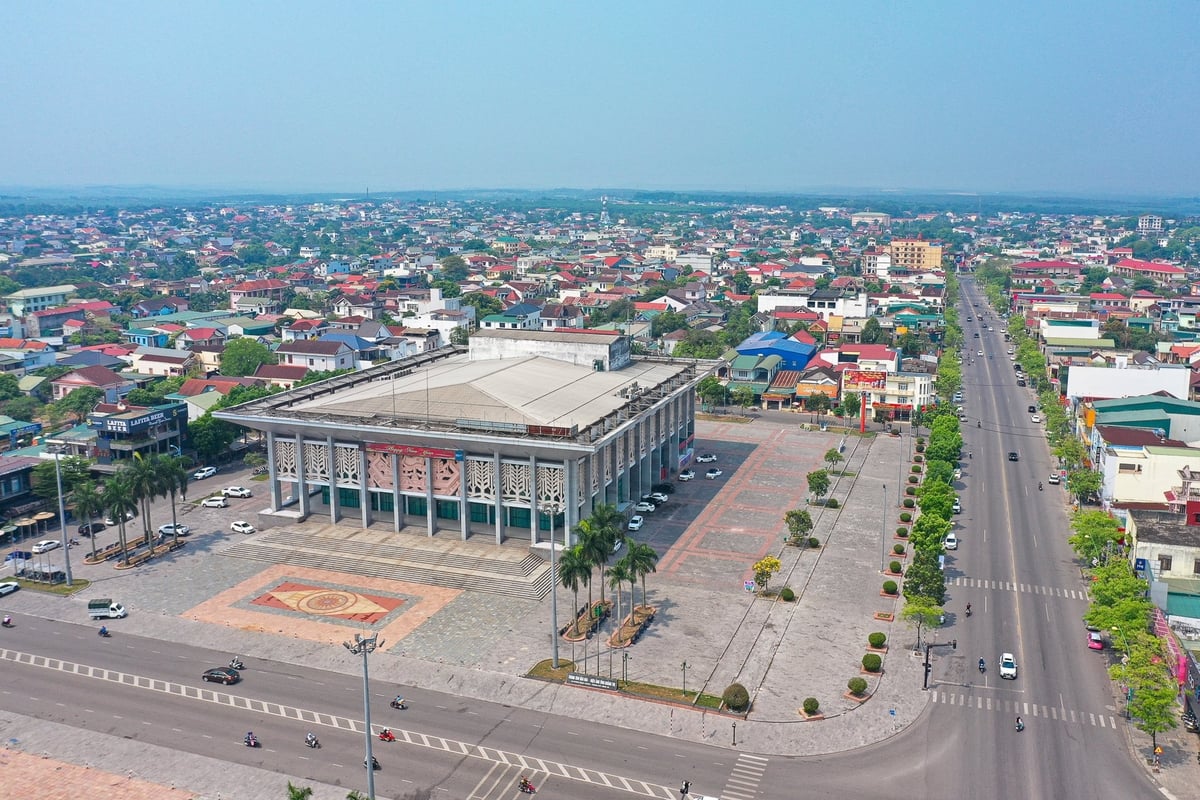November 21, 2025 | 09:00 GMT +7
November 21, 2025 | 09:00 GMT +7
Hotline: 0913.378.918
November 21, 2025 | 09:00 GMT +7
Hotline: 0913.378.918

The Government's project emphasizes expanding development space for new administrative units. Photo: Tung Dinh.
The principles for reforming administrative units at all levels, as stated in the project, is following criteria on natural area and population size as prescribed by law, as well as aspects of history, tradition, culture, ethnicity; location, geographical conditions; scale, level of socio-economic development; traffic infrastructure, information technology; requirements to ensure national defense, security and international integration.
New communes’ names must be carefully researched, thoroughly considering traditional, historical, and cultural factors.
Prioritize using names previously used before the merger, minimizing the impact on people and businesses due to having to convert documents and geographical indications related to provincial-level administrative units.
Select the administrative-political center of one of the current units as the administrative-political center of the new administrative unit to ensure that the local government quickly goes into operation.
The administrative-political center of the reformed unit has a favorable geographical location, synchronous economic-social infrastructure, especially a developed transportation system (airport, road, port, ...), easily connecting with areas within the province, cities and large urban areas, economic centers of the whole country, or with the marine system.
Based on history of formation, development, and the process of reforming administrative units at all levels in Vietnam, the scientific basis of the elements constituting provincial-level administrative units and international experience, 6 criteria for arranging and merging provincial-level administrative units are proposed, including: natural area; population size; criteria on history, tradition, culture, ethnicity; criteria on geo-economics; criteria on geopolitics; criteria on national defense and security.
According to the Project, the local government will be organized at two levels: (1) Provincial level includes provinces and centrally-run cities. (2) Communal level includes communes, wards (on the mainland), and special zones (on islands). District- and town-level administrative units will be abolished.
At the provincial level, the local government includes the People’s Council and the People’s Committee. The Provincial People’s Council will set up three committees: the Legal Committee, the Economic-Budget Committee, and the Cultural-Social Committee. Provinces with large ethnic minority populations may form an additional Ethnic Committee.
The People’s Council of a centrally-run city will establish four committees: the Legal Committee, the Economic-Budget Committee, the Cultural-Social Committee, and the Urban Committee, following the Law on the Organization of Local Government 2025.
After restructuring, the total number of provincial-level staff (cadres, civil servants, and public employees) must not exceed the current total. The plan also includes streamlining staff, reorganizing teams, and improving their quality, aiming to meet regulatory standards within five years.
It is proposed that the Politburo assign the Central Organizing Committee to advise and guide the setup of leadership and management teams at the provincial level (Party, mass organizations, People's Councils, People's Committees, and relevant Party and mass organization committees) after the mergers. Special attention should go to assigning heads and resolving issues related to surplus deputy heads in merged provinces and cities.
At the communal level, the local government includes the People's Council and the People's Committee. The People's Council will form two committees: the Legal Committee and the Economic-Social Committee. Communal-level units that remain unchanged (not merged) may not need specialized departments.
The Government plans to arrange for an additional Vice Chairman of the People's Committee and a number of civil servants for the People's Committees at the commune level where there is no specialized Department and assign the provincial-level local government to make specific decisions for each commune-level administrative unit in the area.
In the case of arranging two or more commune-level administrative units into a new commune-level administrative unit, the orientation is to organize a maximum of four specialized Departments and equivalents under the People's Committee at the commune level.
Regarding the establishment of cadres, civil servants and public employees at the commune level, in the immediate future, the number of cadres, civil servants and public employees at the district level and the existing cadres and civil servants at the commune level will be kept unchanged before being arranged to be assigned to the new commune-level administrative units (after the arrangement).
The project aims to merge current island districts and island cities into commune-level administrative units called “special zones.” Accordingly, 11 special zones under the province will be formed from 1 island district (11 island districts, including: Van Don, Co To, Cat Hai, Truong Sa, Hoang Sa, Phu Quy, Kien Hai, Bach Long Vi, Con Co, Ly Son, Con Dao). Particularly for Phu Quoc city, Kien Giang province, the competent authority has agreed to separate Tho Chau commune of Phu Quoc city to establish a separate district, establishing 2 special zones, Phu Quoc and Tho Chau.
Translated by Quynh Chi

(VAN) Amid vast floodwaters, the spirit of sharing and helping others shown by many people in Gia Lai reached tens of thousands of residents stranded by raging floods.

(VAN) Climate change is set to emerge as a key focus of collaboration within the framework of the Comprehensive Strategic Partnership between Viet Nam and New Zealand.

(VAN) Future veterinarians will be the ones directly deciding how antibiotics are prescribed, administered, guided and managed across thousands of farms nationwide.

(VAN) Argentine Ambassador Marcos Antonio Bednarski says Viet Nam is playing an increasingly influential role in Argentina’s economic and technical engagement in Southeast Asia, as Buenos Aires is seeking long-term partners.

(VAN) Prime Minister requested local authorities to use all available measures to reach residential areas that are deeply flooded, cut off, isolated, or affected by landslides.

(VAN) To confront historic flood surge on Ba and Kon rivers, the Prime Minister requested local authorities to mobilize all available forces, evacuate residents, and ensure reservoirs and dams safety.

(VAN) The United Kingdom (UK) has offered to assist Vietnam in accessing significant financial resources to drive agricultural innovation while simultaneously expanding the market for forest-based carbon credits.